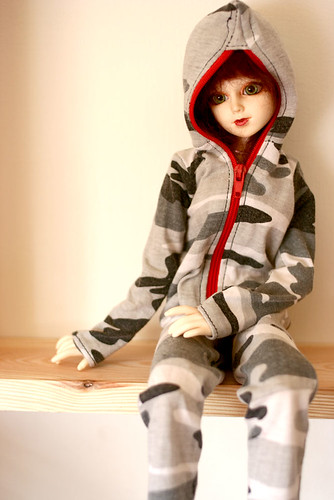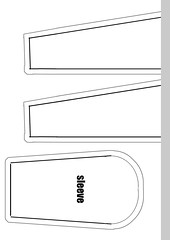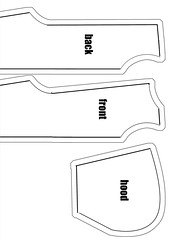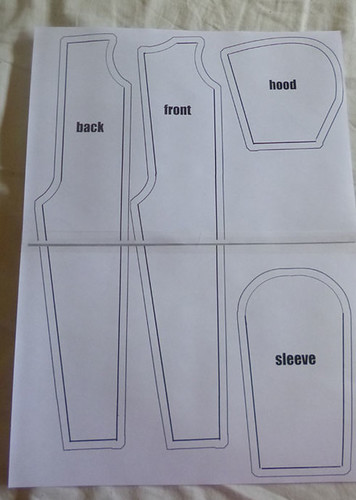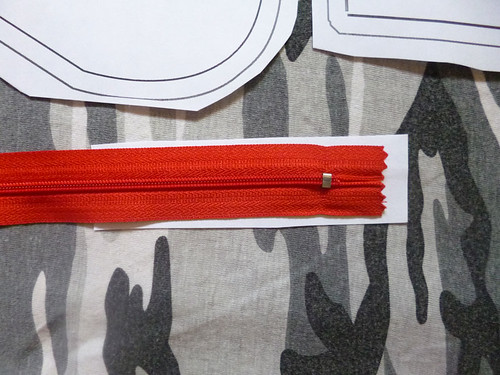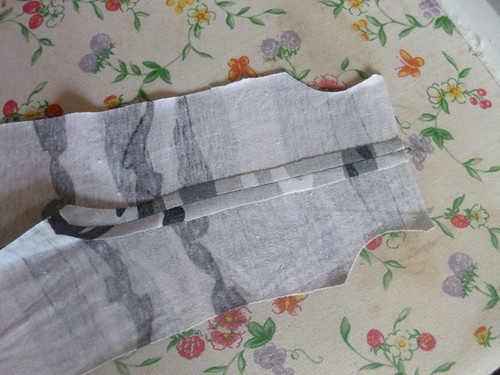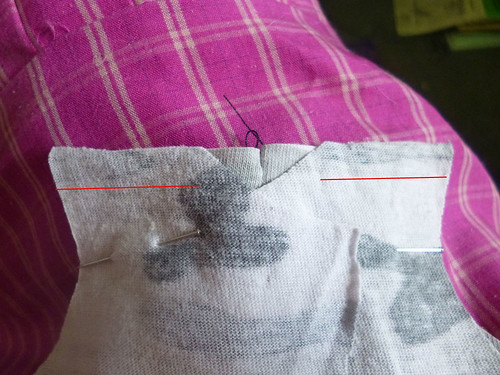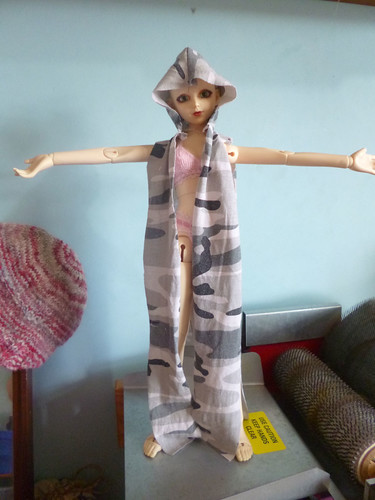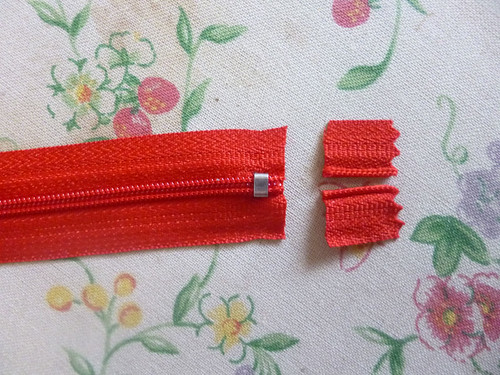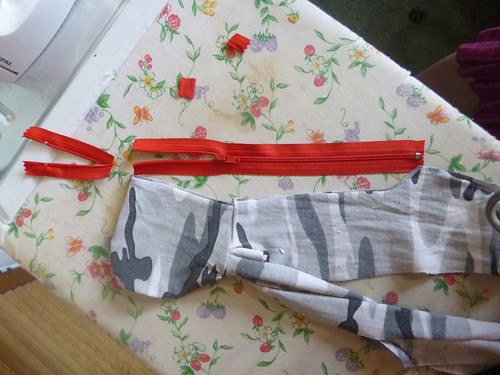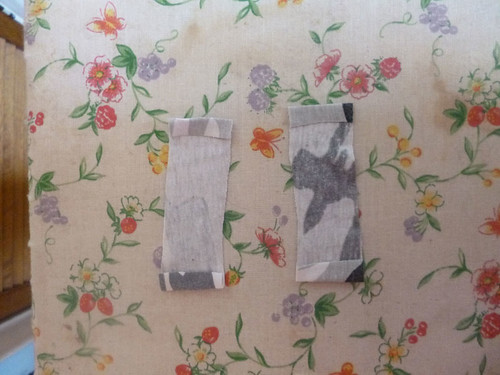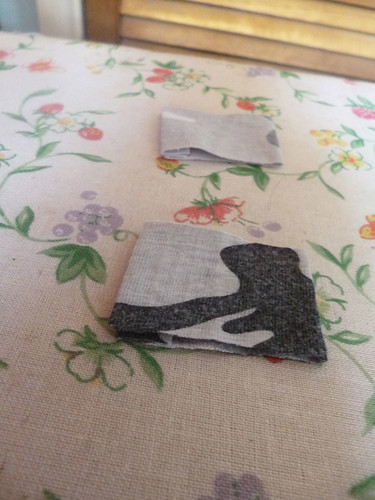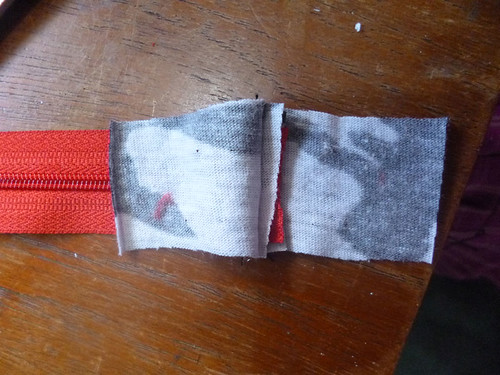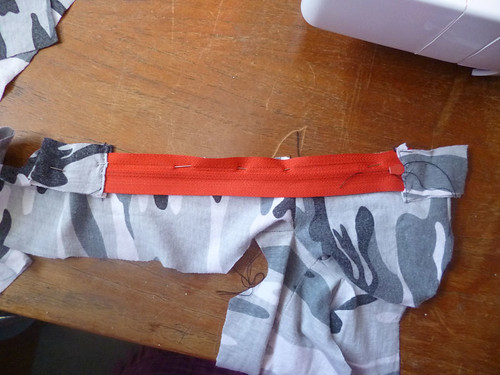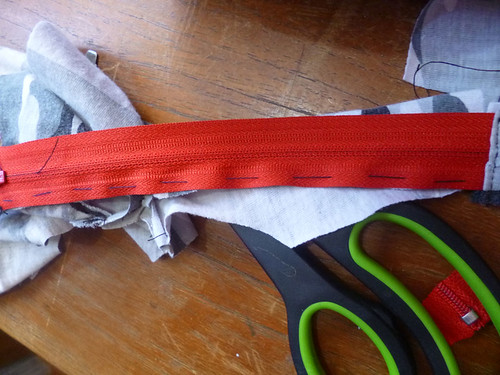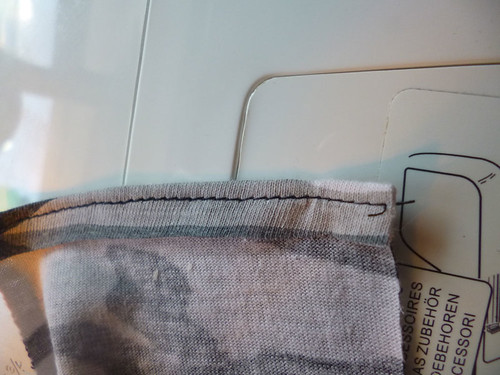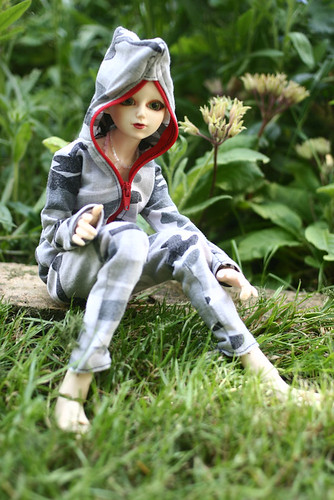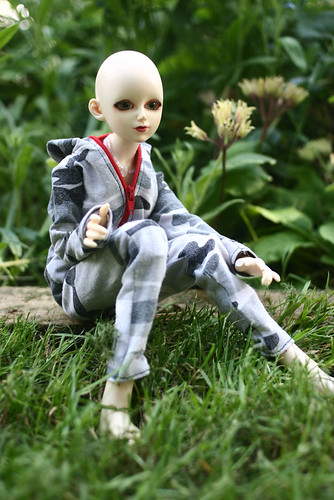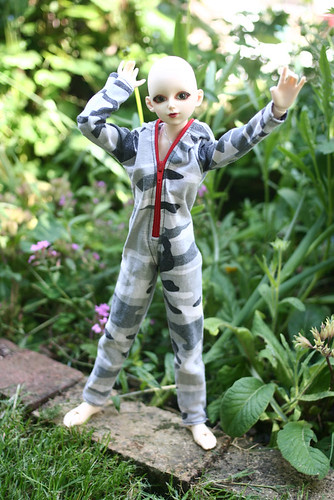Yeah, so I am a baaad blogger. But rather than rectify that by talking about all the things I’ve done in the months since my last post, I’m just gonna forget about it and get on with explaining how to make a onesie for a MSD (42cmish) BJD. My doll is a ‘vivi’ by Xinmeng, purchased from Mirodoll.
This pattern isn’t for complete beginners. Not really because it’s hard, although there are a couple of slightly fiddly curved seams, and putting in a zipper needs a bit of practice if you’re not done it before, but mostly because I have never written a pattern before and don’t really know what I’m doing, so a bit of background sewing knowledge will be helpful so you can understand what I’m talking about!
Things you will need:
Old t-shirt, or similar fabric
Matching thread
Zipper long enough to reach from your dolls crotch to an inch or so above the top of her head (longer is fine, it is trimmed to fit) I believe I used a 10″ zip
Pins
Sewing machine with regular and zipper foot
Iron
Pattern notes:
The pattern is made to be sewn on a machine, so there is a 1/4″ seam allowance, you can reduce this if you’d prefer to hand sew. The outer line on the pattern is the one you should cut around, the inner line is the size of the piece without seam allowance, if you’d prefer to draw your own. Due to the software I used to make it, the edges are rounded, you don’t need to cut them like this, square corners are fine.
Unless otherwise specified, all seams are to be sewn with right sides facing, and pressed open.
The pattern covers two sheets of A4 size paper. If you live in a country where other sizes are standard, then print it at 100% and allow cropping, hopefully nothing useful will be cropped!
Get the pattern by clicking on each of the two below images, then click more actions > download/all sizes and choose the ‘original’ size.
Instructions
Print out the pattern, and tape it together, making sure the lines for the legs match up
Roughly cut out the pattern pieces and lay them out on your ironed t-shirt. If you are using fabric, then fold it half, each pattern piece is meant to make two symmetrical pieces. Cut another pattern piece that is a little wider than your zipper, and 4″ long.
Pin your pattern pieces to the t-shirt, and cut them out, cutting through both layers of fabric. You will end up with 10 pieces, 2 backs, 2 fronts, 2 hoods, 2 sleeves, and 2 zipper tabs.
With right sides facing, pin the two hood pieces together, and sew around the curved top/back seam.
With right sides facing, pin the two back pieces together, and sew along the seam from the crotch to the top of the neck.
Press seams open. It’s a bit fiddly to do the inside of the hood, but as long as the top and back part are flattened, the middle doesn’t matter too much.
Pin the front pieces to the joined back, and sew along the shoulder seams. The lines you should sew are marked below.
After ironing these seams flat, pin the hood into place. Line up the centre hood seam with the centre back seam, and pin in place around to the front. Make sure you pin the shoulder seams flat. Sew this seam.
You should now have a crazy robe looking thing!
Take your zipper, and cut off the bottom, just below the stopper
Line up the zipper with your onesie, starting at the crotch, and cut off the top level with the top of the hood (I actually cut mine a bit shorter, but if I did it again I’d err on the side of longer so the zip comes closer to the top of the hood)
Take your zipper tabs and fold over 1/4″ on each end, and iron.
Fold them in half, and iron again
Put the zipper inside the tab, half an inch or so deep, pin, and sew across to attach the zipper to the tab. I forgot to take a photo of this, but it’s relatively simple. When this is done, cut across the fold line at the bottom, open it up, and trim the end of the zipper.
Repeat for the top of the zipper, you will have to do this with the zip open to stop the pull getting in the way of the sewing machine foot, so make sure you pin carefully.
With the right side of the zip facing the right side of one front, making sure the zip is the right way up, pin in place, deciding how much tab you want at the top and bottom (excess can be trimmed after sewing).
Using a needle and waste thread, baste the zipper in place (some people can get away without this step, and sew a zip in that is just pinned in place. I am not one of those people)
Put the zipper foot on your machine, and sew the zip in. Start with the zip in one position, then stop half way through (leave the needle in the fabric and lift the foot) and slide the pull past, so it doesn’t get in the way. When you sew the tab on each end, sew a diagonal line from the line of the zipper stitching to the edge (so a triangle will be visible on the front when finished).
Repeat for the other size of the zipper.
Press, and top stitch all the way round the zip.
Put the regular foot back on your machine, and prepare to sew the arms. Pinning them is a little fiddly, so just take your time
When both sleeves are sewn in, fold over the ends of each arm and leg 1/4″, iron into place, and sew
From here, I got so excited to be on the home straight, I forgot to take any more photos. It’s pretty simple though.
Make sure your zipper is open, or you won’t be able to turn it the right way out at the end!
Line up all the edges, pin, and sew. There are three seams: wrist to ankle on each side, and the inside legs . Nothing complicated here, just nice straight lines.
When you’re done, turn it inside out and give it a quick press, then try it on your doll!


